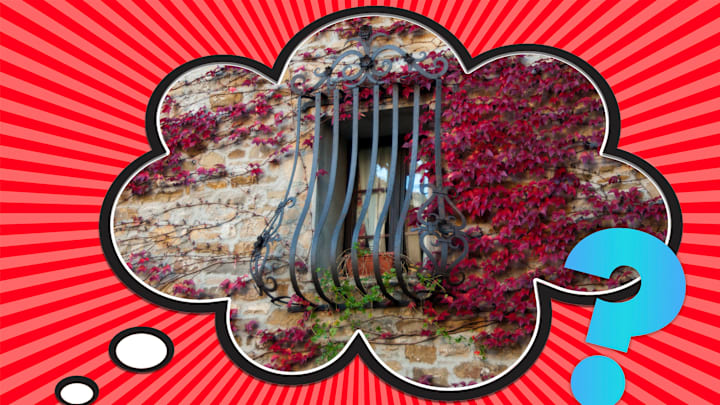London, New York, Paris. Some of the most romanticized cities in the world share a common feature: an abundance of metal bars covering building windows.
The bars don’t detract from the beauty of the buildings, but rather, add a certain elegance to them. Strolling along historic avenues, the gently curved ironwork—often featuring ornate details and motifs—can appear more like a piece of art than a security device.
However, it also raises the question: what function does it actually serve? Below, we break down the history behind these old-fashioned window guards and why they’re shaped so oddly in the first place.
- A Brief History of Window Guards
- The Reason Why Some Old Iron Window Guards Have a Bulge
- Do “Belly Bars” Actually Work?
A Brief History of Window Guards
Metal bars covering windows are an age-old method for preventing break-ins in urban areas. They’re also useful for keeping people in—to keep them from falling out, of course.
In New York, the law states that every apartment building of three or more units that may house children under 10 years of age must have some sort of guard on the windows for safety purposes.
Montgomery County, Maryland, has a similar regulation: all apartment units above the ground floor housing children aged at 11 or under must have window bars [PDF] or some sort of stop to prevent windows from opening more than four inches. Though they’re effective safety mechanisms, not everyone is a fan; some people feel like they make their homes look “like a prison.”
But in fact, beyond their usefulness, well-made cast iron and wrought iron window bars are often used to enhance aesthetics. They became especially popular in 19th-century construction, with ironworkers pulling from various artistic movements (such as Rococo, Gothic, and Renaissance styles) to make unique patterns.
Certain cities stood out more for their distinctive window guards, too. Charleston, South Carolina, for instance, was known for signature palmetto designs. Meanwhile, Chicago was best known for more minimalistic, geometric designs.
The Reason Why Some Old Iron Window Guards Have a Bulge
Across the world, window guards can add a touch of historic elegance to any structure. But there’s one feature in particular that often makes more ornate sets of window bars stand out: the “potbelly.” This refers to the curve found on the lower half of some of these bars (the shape mimics that of a human stomach).
The extra room at the bottom is there for two major reasons: For one, it accommodates planter boxes that people might like to hang in their windows. Having a curved window guard helps residents grow flowers, herbs, and other plants right from their windowsills, but with a certain degree of security.
This enforced metal gap creates a wider space between people inside and outside the window, especially on a building’s ground level (which is where you may be most apt to see some of these potbellied window bars). This gap means that those inside have ample room to lean when peering outside the window, and those who may be trying to reach inside are pushed farther away.
Do “Belly Bars” Actually Work?
Despite their antique charm, however, window bars aren’t always the preferred method for protecting a house’s entry points.
The famous Property Brothers, for example, seem to prefer a more open aesthetic for windows, getting rid of bars to create a light and airy look.
For homeowners who share the same preferences, there are other methods for home security that are less obvious, such as reinforced glass, proper locks, and even strategically placed shrubbery.
Have you got a Big Question you'd like us to answer? If so, let us know by emailing bigquestions@mentalfloss.com.
Read More Big Questions Below:
